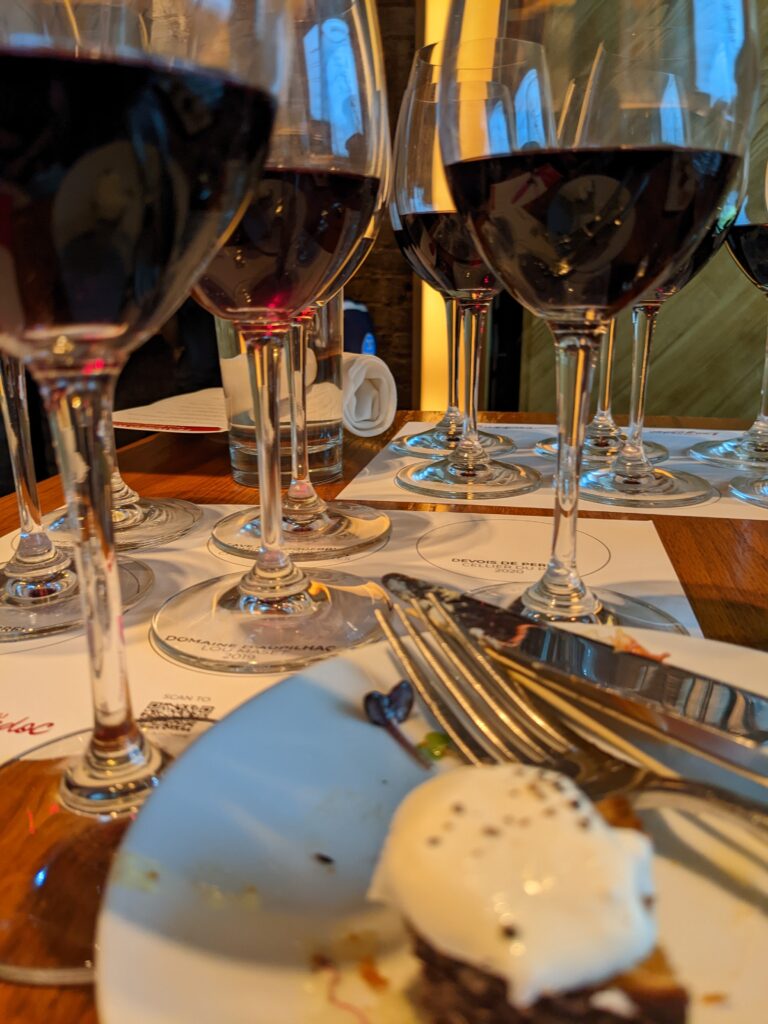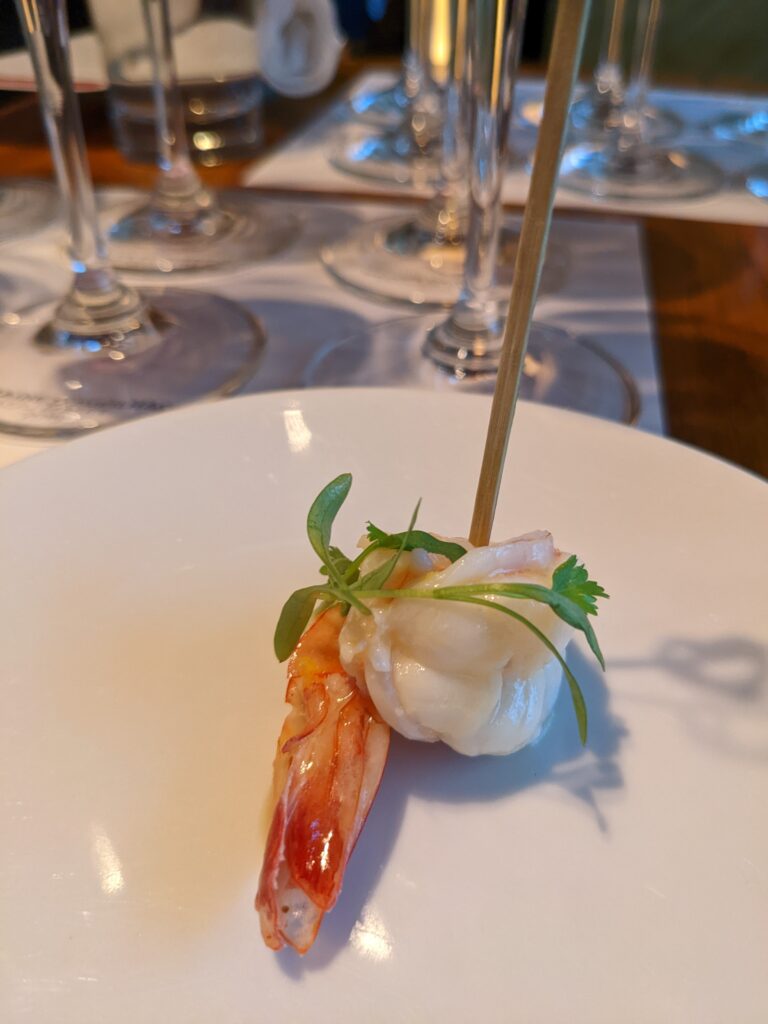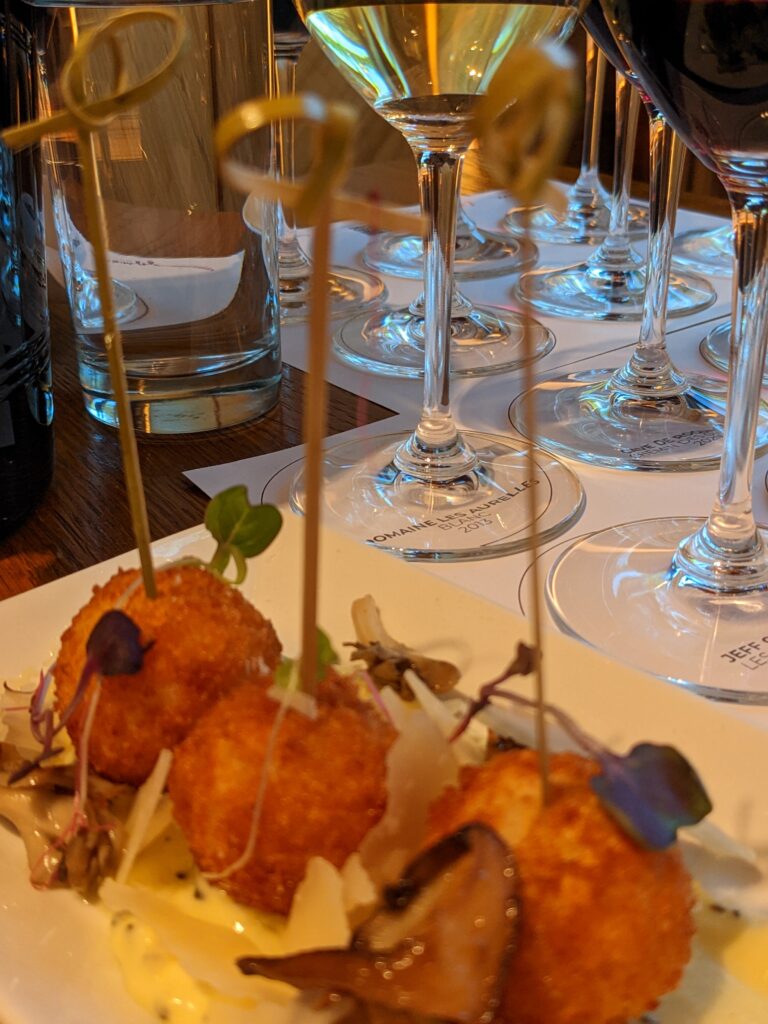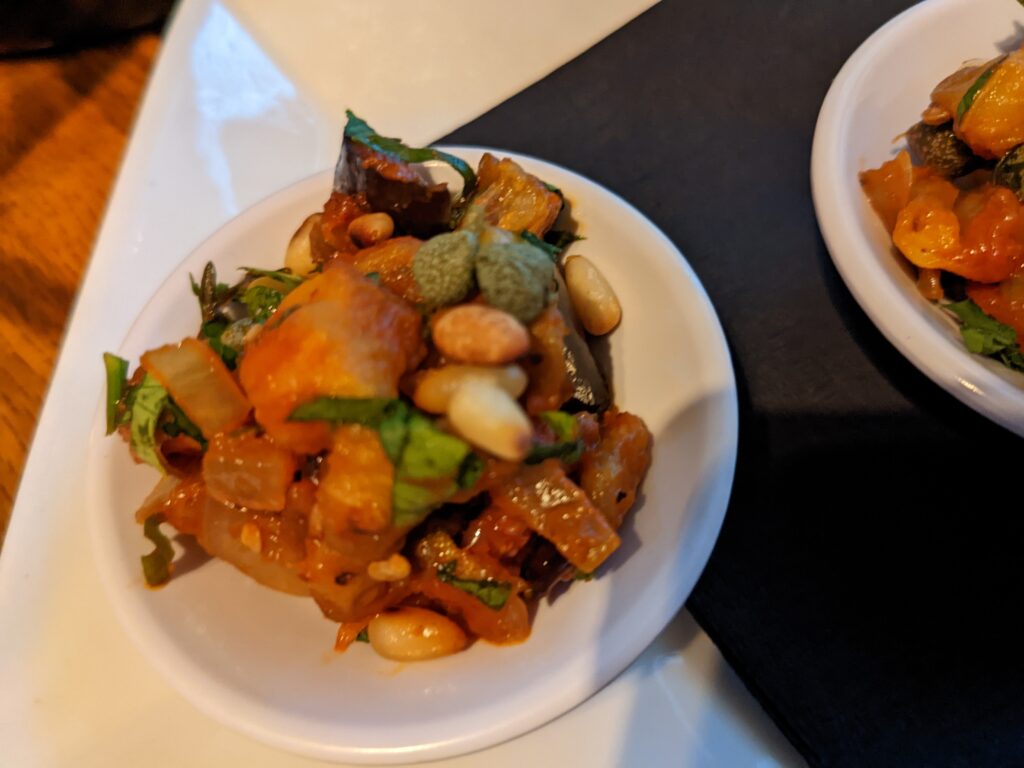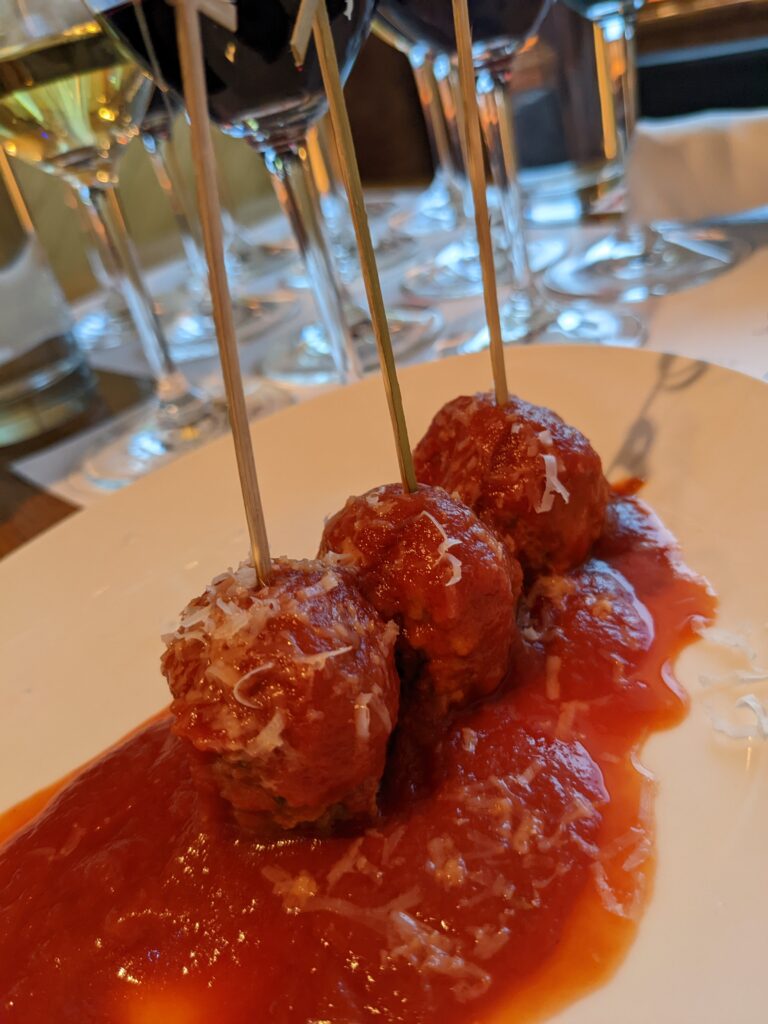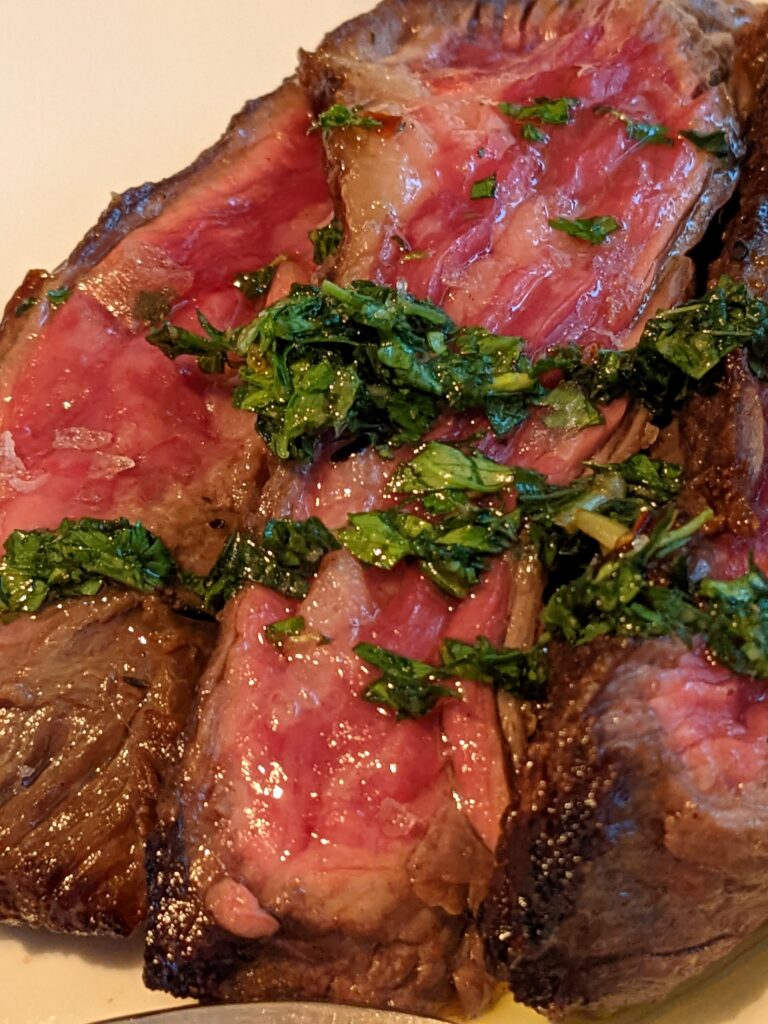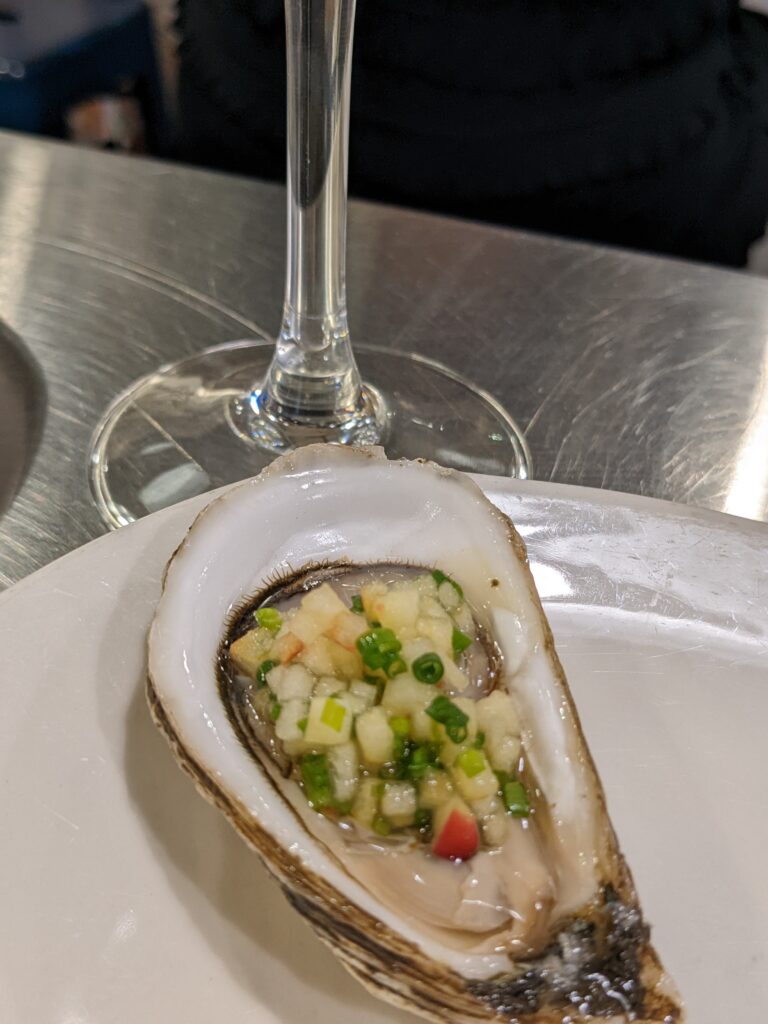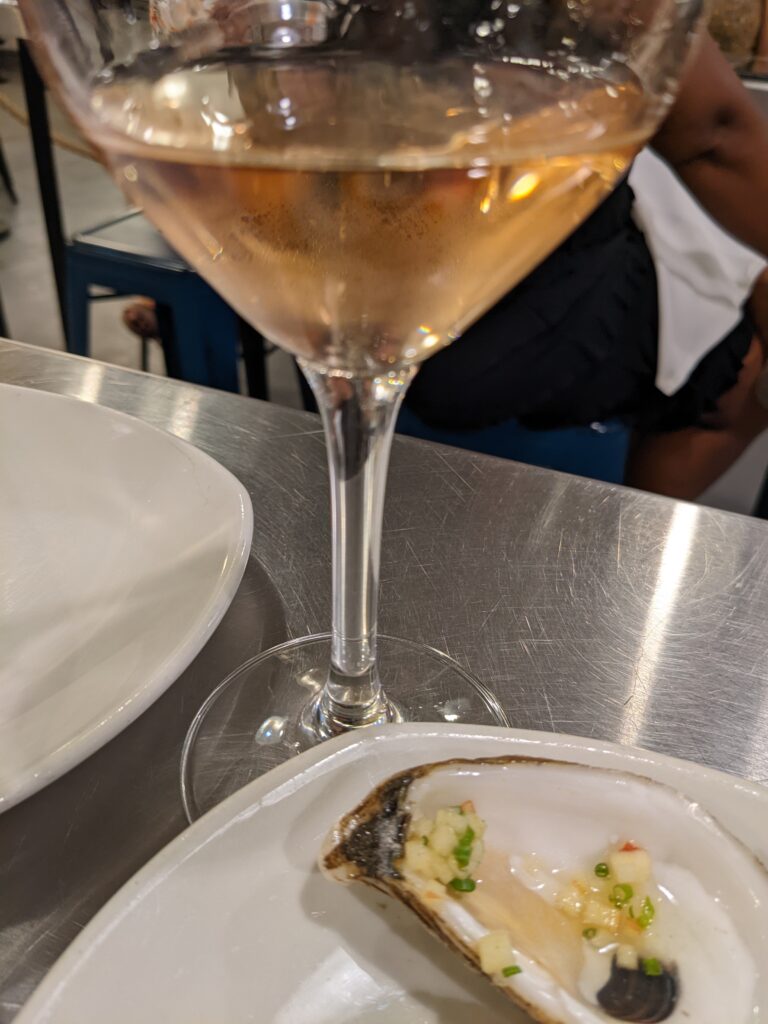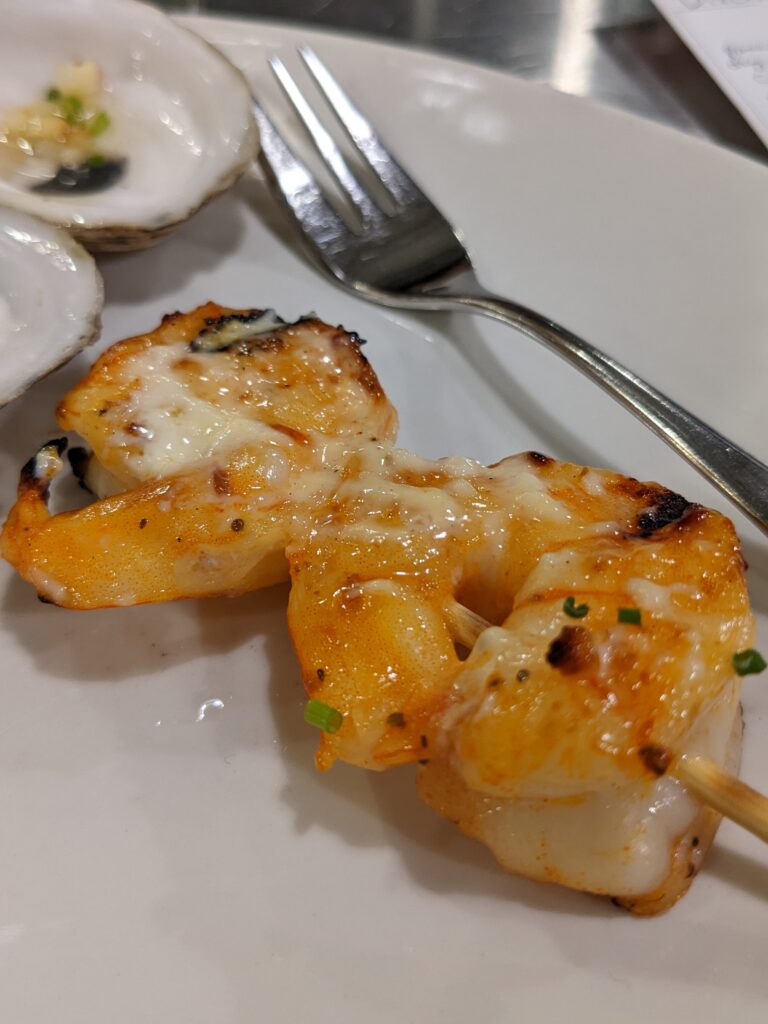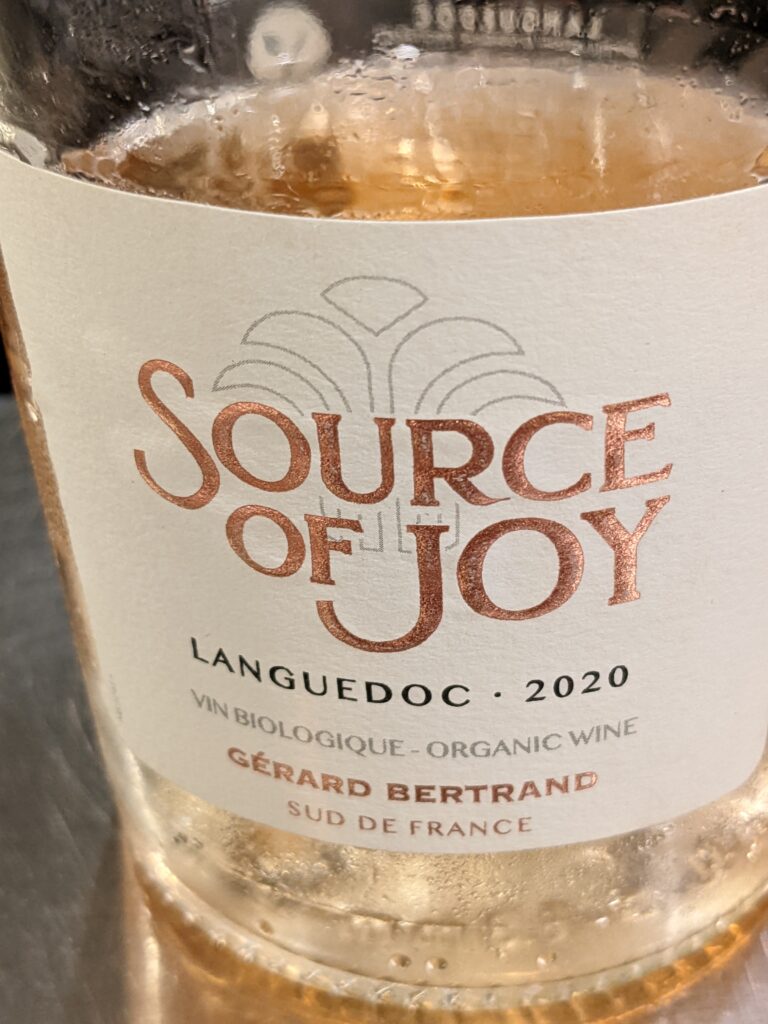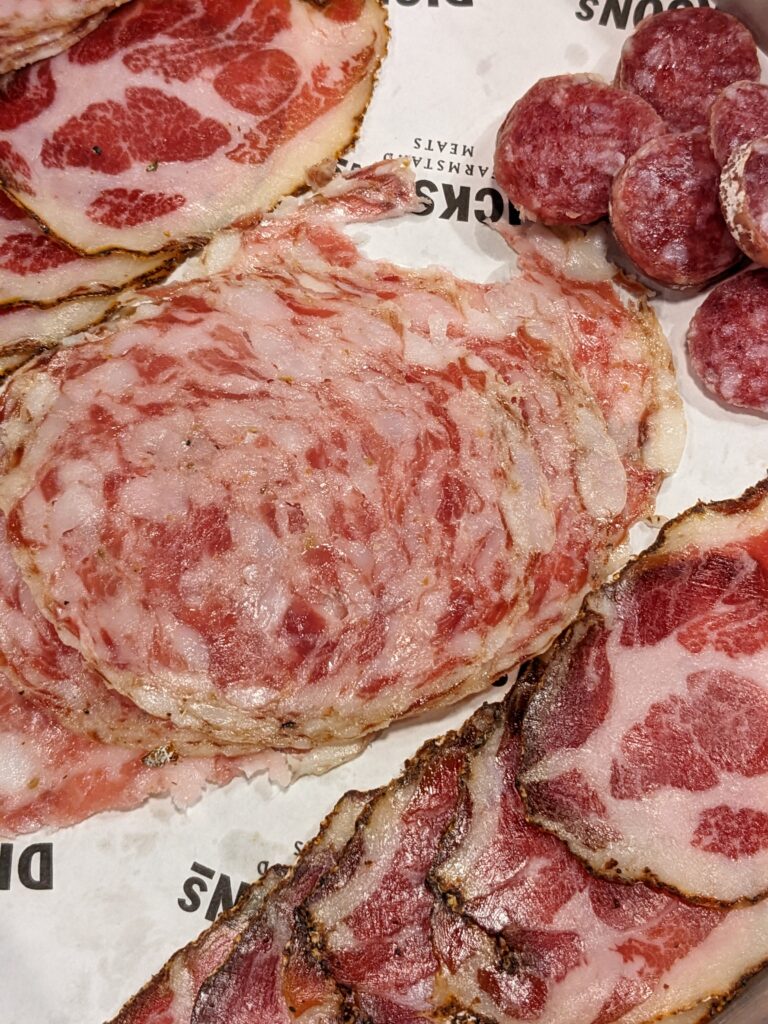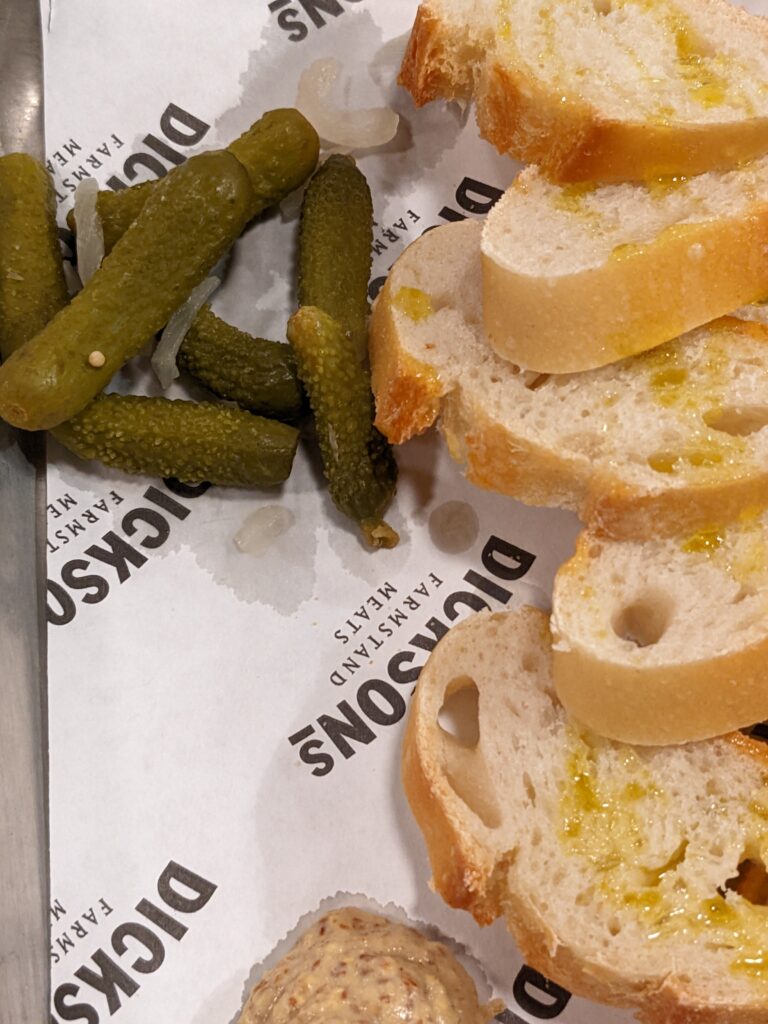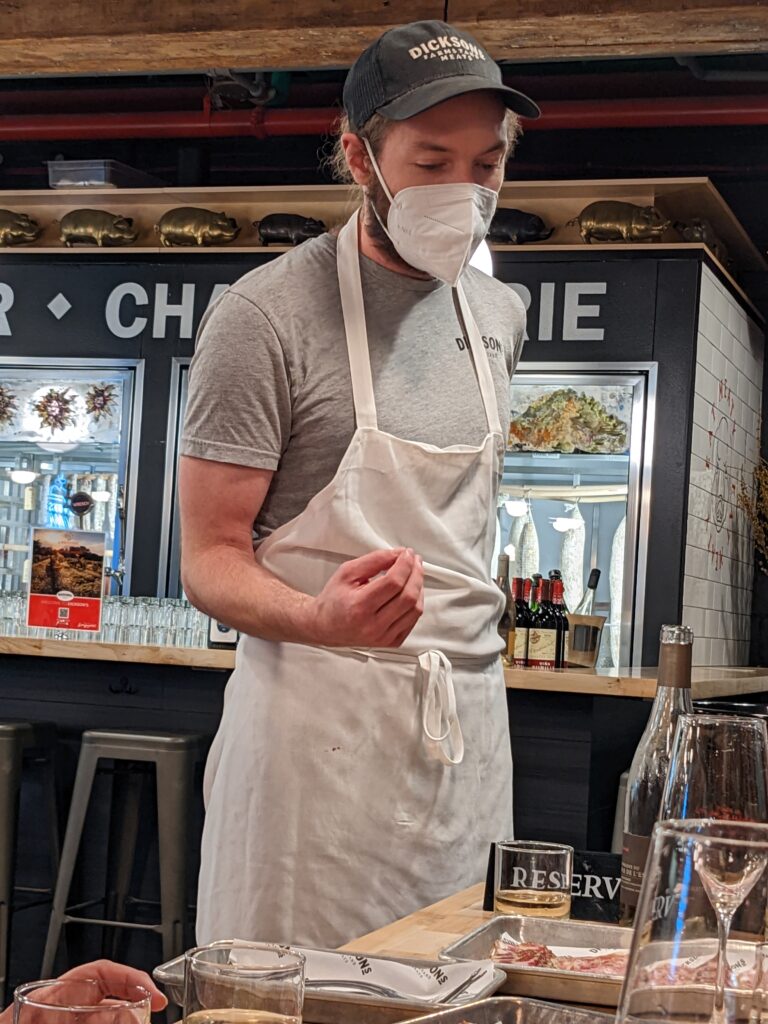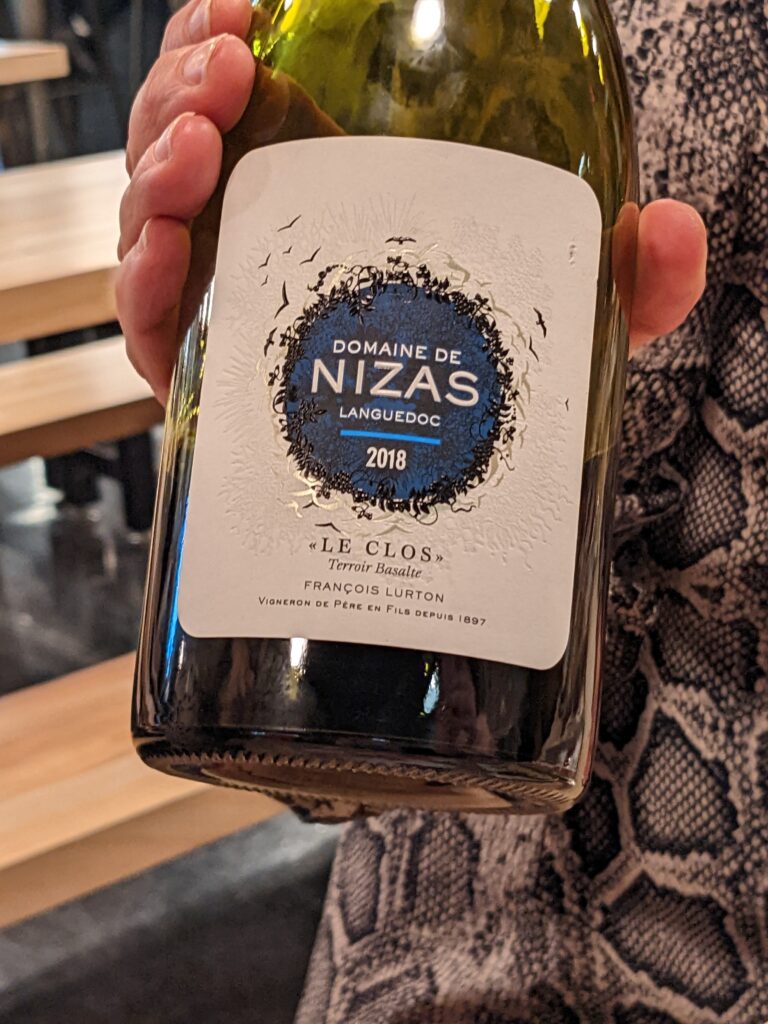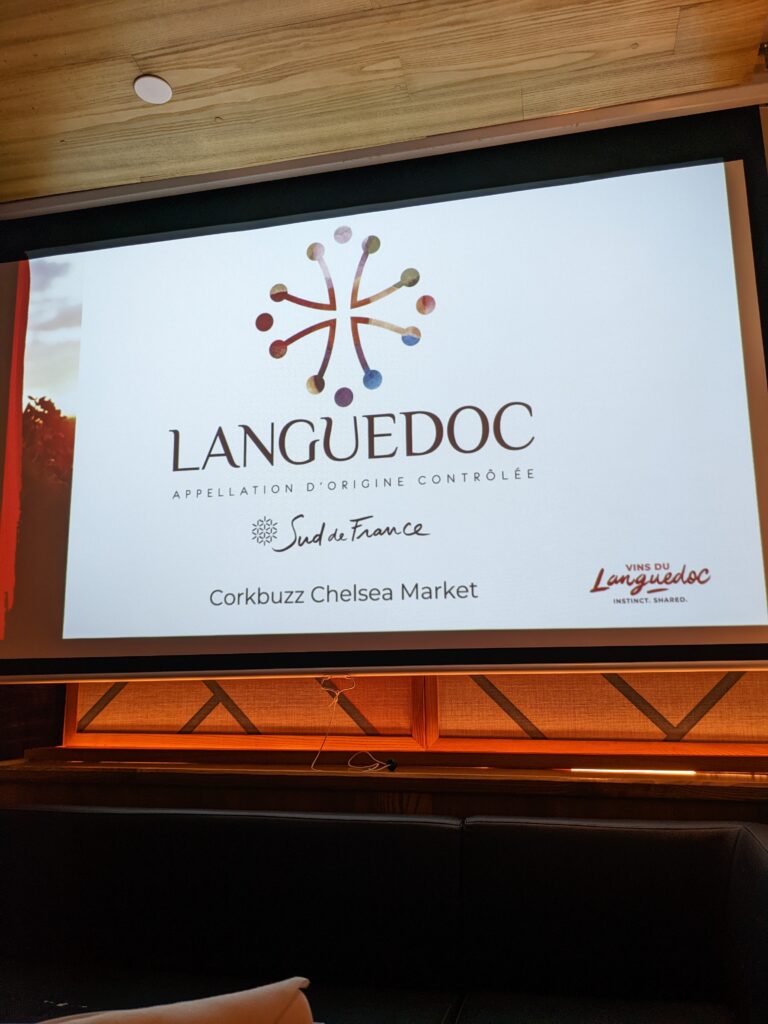
Nestled in the south of France between the French Riviera and the region of Roussillon, the wines of Languedoc are impressive as well as both food and wallet friendly. If these are not on your radar, they should be given their diversity and sheer delight!
I recently had the pleasure of tasting through a selection of Languedoc wines in a guided tasting with Master Sommelier and owner of Corkbuzz, Laura Maniac. Each wine was beautifully (and deliciously) paired with a small bite, underscoring the ease with which these wines pair with a wide range of cuisine. After our time with Laura, we were led on a brief culinary tour of the Chelsea Market, becoming familiar with other vendors in the venue and the opportunity to sample a few more glasses of Languedoc.
Languedoc’s sunny, Mediterranean climate is tempered with cooling breezes and warm winds, which results in ripe fruit that retains its bright acidity. Thanks to the area’s dry nature, the region has one of the largest organic productions in France with over 30% of producers practicing organic viticulture; another 27% are in progress of converting from conventional practices. In fact, Languedoc launched the world’s first all organic expo — Millesime Bio — in 1993. Additionally, many producers are embracing biodynamics as well. And, with a strong research emphasis on viticulture, centered at L’INRA in Montpellier, the region is well equipped to handle climate change. Moreover, today, the area is home to a quiet revolution as winemakers from elsewhere in France are feeling the pull to make high quality wine within its borders.
Yet, Languedoc is not part of some passing fad. The region boasts 2500 years of wine making history and also lays claim to the discovery of fortification (thanks to Arnaud de Villeneuve in 1285) and sparkling wine production (in 1544 with the creation of Blanquette de Limoux).
The 90,000+ acres of vineyards are planted to 26 different grape varieties, with the majority (59%) of wine production given over to red wine. The balance is equally split among rosé and white wines. Within the vast acreage, there are 20 different appellations within Languedoc, but producers can also choose to bottle their wine under the broader Languedoc AOP. Regardless of the appellation, the wines coming from the region include everyday, inexpensive options, but also collectibles that are showing that this is a region capable of producing at the very top levels.
During the Languedoc event, the wines were custom paired by Chef Yovet Calvario of Corkbuzz; David Seigal, Culinary Director of Lobster Place; and Pablo Lopez, Chef Charcutier of Dickson’s Farmstand Meats.
We started off the tasting with a lusciously aged white wine served with lemon butter shrimp, matching the decadent and rich nature of both the wine and the food. The next bite was arancini with mushrooms, which paired well with a fresh, fruity red. Ricotta crostini (using Laura’s grandmother’s recipe for homemade ricotta) showed spectacularly with a more robust red. The next set of reds went well with an eggplant caponata dish, meatballs in a tomato sauce and chimichurri steak.
At Lobster Place, which has been in business for 45 years, we enjoyed raw oysters and
grilled shrimp, coupled with a fresh white and a fruit-forward rosé, respectively. Then, at Dickson’s, we had the pleasure of seeing how the range of charcuterie brought out the flavors of the wine — a pale rosé and an intense red.
TASTING NOTES
CORKBUZZ
Domaine Les Aurelles, Aurel Blanc 2013, Languedoc, France, $80.00
There are two ex-Bordeaux winemakers behind this wine, which is produced from 100% Roussanne and provides a perfect example of an age-worthy white from this region. Aromas of hazelnut, beeswax and pineapple greet the nose and persist on the dry palate. It is ripe and rich, with good acidity and notes of honey in the long finish.
Cave de Roquebrun, Chemin des Olivettes 2020, Languedoc, France, $13.00
Established in 1967, the Cave de Roquebrun co-op represents 70 winegrowers. This wine brings together 45% Syrah, 30% Grenache, 15% Mourvedre and 10% Cinsault and displays lots of fresh, red fruit with garrigue/dried herbs, with lavender and pepper especially in finish.
Domaine d’Aupilhac, Lou Maset 2019, Languedoc, France, $23.00
Named for an old, stone hut found in the vineyards of this biodynamic producer, the Lou Maset is intense and angular with fresh, lifted black fruit. A blend of 40% Grenache, 40% Cinsault, 10% Carignan, 5% Syrah, and 5% Alicante Bouchet, it is quite tannic, with lingering notes of dried orange peel, pepper and herbs.
Jeff Carrel, Les Darons 2019, Languedoc, $15.00
Named “Les Darons” which is an affectionate term used in Parisian suburbs for one’s parents, this is a blend of 75% Grenache, 20% Syrah, and 5% Carignan. It is lush with red and black fruit, woody notes, good, ripe tannins, lots of spice and full body, culminating in long length.
Devois de Perret, Cellier du Pic 2020, Languedoc, France, $14.00
Primarily Syrah, with 25% Grenache, this wine offers up complex aromas of smoke, leather, and dark red cherry. The medium+-bodied palate is fresh with good fruit character and long length.
Château La Negly, Clos des Truffiers 2018, Languedoc, France, $200.00
Originally called Ancely, Château La Negly dates to 1781. Consequently, this wine is produced from some of oldest vines in the region. Bringing together 80% Syrah and 20% Grenache, this is a stunning wine with layers of aromas and flavors. It is very oak dominant, with spice, dill, earth, leather, blackberry, cherries, floral and minerality as well as being rich in texture and tannin, culminating in long length.
LOBSTER PLACE
Château de Lascaux, Garrigue 2021, Languedoc, France, $20.00
This white blend (35% Vermentino, 20% Roussanne, 15% White Grenache, 15% Clairette, 10% Marsanne, and 5% Viognier) offers up fresh fruit and lively acidity with aromas and flavors of unsweetened limeade and tropical fruit with a lovely texture. It paired extremely well with Avelon oysters from Maine.
Gerard Bertrand, Source of Joy 2020, Languedoc, France, $20.00
This organic rosé had a portion of its wine matured in oak barrels, giving it depth and structure on the palate. It shows lots of fresh floral and strawberry notes, with long length.
DICKSON’s FARMSTAND MEATS
Domaine du Pas de l’Escalette, Ze Rozé 2020, Languedoc, France, $13.00
This is a much paler, lighter-bodied rosé, which is the result of a direct press and gentle extraction. With barely any color, it resembles a white more than a rosé, especially with its high acidity, but its berry aromas and flavors belie its true identity as a rosé.
Domaine de Nizas, Le Clos 2018, Languedoc Pézenas, France, $21.00
Half of this Syrah blend (60% Syrah, 20% Grenache, 15% Mourvèdre and 5% Carignan) spent time in three-year-old French oak barrels. Displaying lots of character and finesse, it is fresh yet tannic, with red fruit and spice, with long length.



